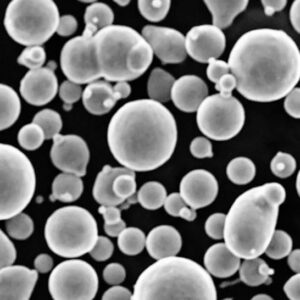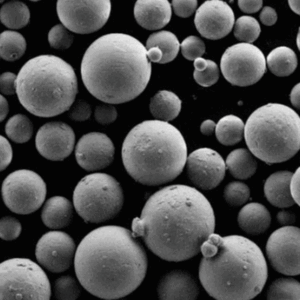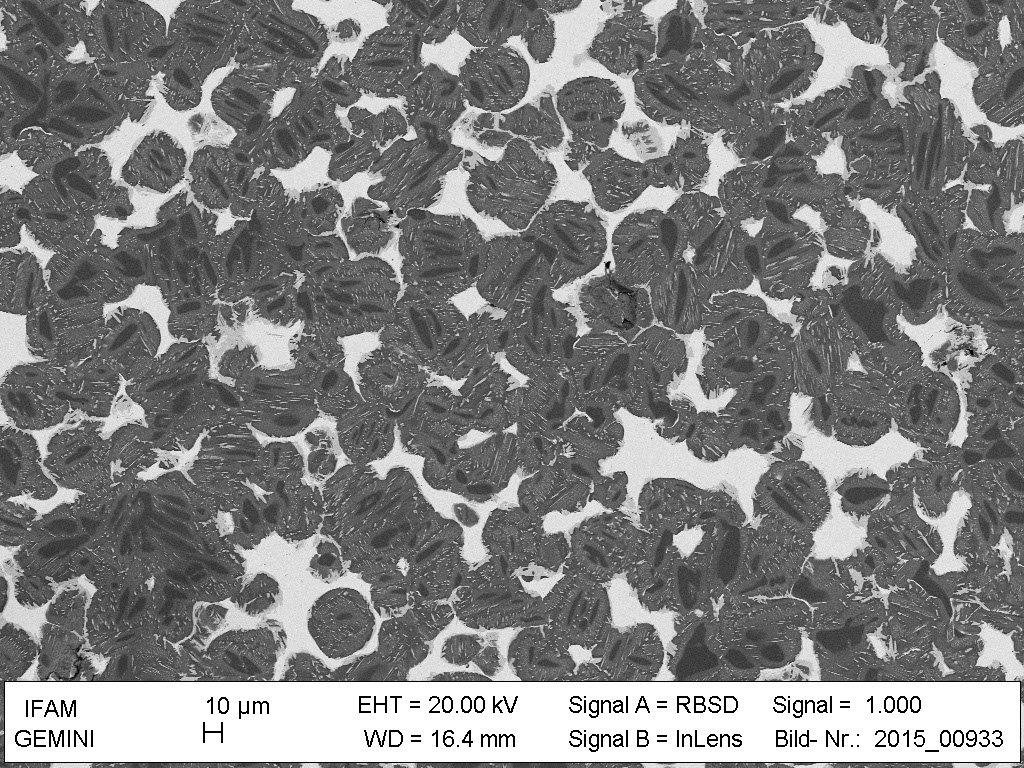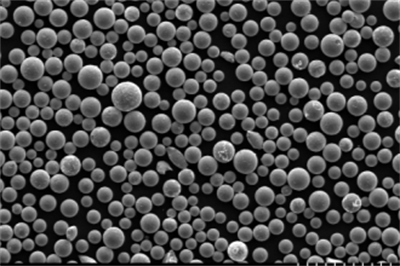개요
그리고 다이버전트 적응형 프로덕션 시스템(DAPS) 는 첨단 기술을 활용하여 생산 프로세스를 최적화하는 제조 분야의 획기적인 접근 방식입니다. 이 시스템은 다양한 생산 요구 사항에 맞게 조정되어 효율성, 유연성 및 지속 가능성을 향상시킵니다. 혁신적인 방법론과 최첨단 소재를 통합함으로써 DAPS는 현대의 제조 과제에 대한 혁신적인 솔루션을 제공합니다.
다이버전트 적응형 프로덕션 시스템(DAPS)이란 무엇인가요?
DAPS는 생산 수요, 자재, 시장 상황의 변화에 동적으로 대응할 수 있도록 설계되었습니다. 기존의 경직된 생산 시스템과 달리 DAPS는 유연성과 적응성을 기반으로 구축되어 제조업체가 신속하게 전환하고 다양한 요구 사항을 충족할 수 있습니다. 이 시스템은 AI, IoT, 빅데이터 분석과 같은 디지털 기술의 조합을 활용하여 실시간으로 프로세스를 모니터링하고 조정함으로써 최적의 성능을 보장하고 낭비를 최소화합니다.
DAPS의 주요 기능:
- 적응력: 생산 요구 사항과 재료의 변화에 쉽게 적응할 수 있습니다.
- 효율성: 실시간 조정을 통해 리소스 사용을 최적화하고 낭비를 최소화합니다.
- 지속 가능성: 친환경적인 관행과 재료를 사용하여 환경에 미치는 영향을 줄입니다.
- 확장성: 소규모 및 대규모 생산 요구 사항에 적합합니다.
- 통합: 기존 제조 시스템 및 프로세스와 원활하게 통합됩니다.
DAPS의 금속 분말
금속 분말은 특히 적층 제조 및 3D 프린팅 애플리케이션에서 DAPS에서 중요한 역할을 합니다. 이러한 분말은 최종 제품의 품질과 일관성을 보장하기 위해 조성, 입자 크기 및 특성에 관한 특정 기준을 충족해야 합니다.
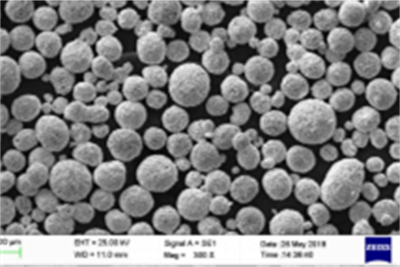
DAPS에 사용되는 금속 분말의 종류
| 유형 | 구성 | 속성 | 애플리케이션 |
|---|---|---|---|
| 티타늄 합금 | Ti-6Al-4V | 고강도, 내식성 | 항공우주, 의료용 임플란트 |
| 스테인리스 스틸 | 316L, 17-4 PH | 내식성, 내구성 | 자동차, 산업 장비 |
| 알루미늄 합금 | AlSi10Mg | 가볍고 우수한 기계적 특성 | 항공우주, 자동차, 소비재 |
| 니켈 합금 | 인코넬 718, 625 | 고온 내성 | 터빈 블레이드, 항공우주 |
| 코발트-크롬 | CoCr | 내마모성, 생체 적합성 | 의료용 임플란트, 치과 보철물 |
| 구리 합금 | CuCrZr | 높은 전도성 | 전기 부품, 열교환기 |
| 공구강 | H13, M2 | 경도, 내마모성 | 금형, 금형, 절삭 공구 |
| 텅스텐 | W | 고밀도, 고융점 | 항공우주, 방위, 전기 접점 |
| 브론즈 | Cu-Sn 합금 | 낮은 마찰, 우수한 내마모성 | 베어링, 부싱, 조각품 |
| 마그네슘 합금 | AZ91D, WE43 | 가볍고 우수한 중량 대비 강도 | 자동차, 항공우주, 전자 |
DAPS에서 금속 분말의 응용 분야
| 애플리케이션 | 설명 |
|---|---|
| 항공우주 | 항공기 및 우주선용 경량, 고강도 부품 제조 |
| 자동차 | 연비 및 성능 향상을 위한 내구성 높은 경량 부품 생산 |
| 의료용 임플란트 | 생체 적합성 임플란트 및 보철물 제작 |
| 산업 장비 | 다양한 산업 응용 분야를 위한 견고한 기계 및 도구 제작 |
| 소비재 | 내구성이 뛰어난 맞춤형 소비자 제품 개발 |
| 전기 부품 | 전자 기기용 고전도성 부품 생산 |
| 방어 | 군용 애플리케이션을 위한 고밀도 부품 제조 |
| 열교환기 | 효율적인 열 관리 시스템 구축 |
| 조각과 예술 | 복잡하고 내구성이 뛰어난 예술 작품 제작 |
| 절단 도구 | 고경도, 내마모성 공구 생산 |
DAPS용 금속 분말 사양
| 유형 | 입자 크기 (µm) | 순도 (%) | 밀도 (g/cm³) | 표준 |
|---|---|---|---|---|
| 티타늄 합금 | 15-45 | >99.5 | 4.43 | ASTM F2924, AMS 4998 |
| 스테인리스 스틸 | 10-50 | >99.5 | 7.8 | ASTM A240, ASTM F138 |
| 알루미늄 합금 | 20-60 | >99.8 | 2.7 | ASTM B209, ISO 3522 |
| 니켈 합금 | 15-45 | >99.5 | 8.44 | ASTM B637, AMS 5662 |
| 코발트-크롬 | 10-50 | >99.5 | 8.3 | ASTM F75, ISO 5832-4 |
| 구리 합금 | 15-60 | >99.9 | 8.96 | ASTM B152, EN 1652 |
| 공구강 | 20-50 | >99.5 | 7.8 | ASTM A681, ISO 4957 |
| 텅스텐 | 10-45 | >99.9 | 19.3 | ASTM B777, MIL-T-21014 |
| 브론즈 | 20-80 | >99.8 | 8.8 | ASTM B584, EN 1982 |
| 마그네슘 합금 | 20-60 | >99.9 | 1.74 | ASTM B93, AMS 4377 |
공급업체 및 가격 세부 정보
| 공급업체 | 금속 분말 유형 | 가격 범위 (kg당) | 위치 | 연락처 정보 |
|---|---|---|---|---|
| 회가나스 AB | 티타늄, 스테인리스 스틸 | $200 – $400 | 스웨덴 | 웹사이트 |
| GKN 회가나에 | 알루미늄, 니켈, 코발트-크롬 | $150 – $350 | 미국 | 웹사이트 |
| LPW 기술 | 공구강, 텅스텐 | $250 – $500 | UK | 웹사이트 |
| Arcam AB | 티타늄, 알루미늄 | $180 – $380 | 스웨덴 | 웹사이트 |
| 카펜터 파우더 | 니켈, 코발트-크롬 | $220 – $450 | 미국 | 웹사이트 |
| AP&C | 스테인리스 스틸, 알루미늄 | $170 – $330 | 캐나다 | 웹사이트 |
| TLS 테크닉 | 구리, 청동 | $140 – $300 | 독일 | 웹사이트 |
| 샌드빅 | 공구강, 니켈 | $230 – $460 | 스웨덴 | 웹사이트 |
| Tekna | 티타늄, 스테인리스 스틸 | $200 – $400 | 캐나다 | 웹사이트 |
| 에라스틸 | 텅스텐, 공구강 | $240 – $470 | 프랑스 | 웹사이트 |
DAPS에서 금속 분말의 장단점
| 금속 분말 유형 | 장점 | 단점 |
|---|---|---|
| 티타늄 합금 | 높은 중량 대비 강도, 내식성 | 높은 비용, 까다로운 처리 |
| 스테인리스 스틸 | 뛰어난 내식성, 내구성 | 더 높은 밀도, 더 어려운 기계 가공 |
| 알루미늄 합금 | 가볍고 우수한 열 전도성 | 일부 합금에 비해 낮은 강도 |
| 니켈 합금 | 높은 내열성, 우수한 기계적 특성 | 고가, 제한된 가용성 |
| 코발트-크롬 | 생체 적합성, 내마모성 | 높은 비용, 까다로운 처리 |
| 구리 합금 | 높은 전기 및 열 전도성 | 고밀도, 산화에 대한 민감성 |
| 공구강 | 높은 경도, 내마모성 | 더 높은 비용, 더 어려운 기계 가공 |
| 텅스텐 | 고밀도, 고융점 | 매우 높은 비용, 처리 난이도 |
| 브론즈 | 우수한 내마모성, 낮은 마찰 | 일부 금속에 비해 낮은 강도 |
| 마그네슘 합금 | 가볍고 우수한 중량 대비 강도 비율 | 가연성, 낮은 내식성 |
특성 다이버전트 적응형 프로덕션 시스템(DAPS)
적응성
DAPS의 뛰어난 기능 중 하나는 적응성입니다. 정적인 조립 라인이 아니라 살아있는 유기체와 같은 공장 현장을 상상해 보세요. 카멜레온이 다양한 환경에 적응하기 위해 색을 바꾸는 것처럼 실시간 데이터에 반응하여 작업을 조정할 수 있습니다. 이러한 유연성 덕분에 어느 날은 항공우주 부품을 생산하고 다음 날은 자동차 부품을 생산하든 DAPS는 원활하게 기어를 전환할 수 있습니다.
효율성
DAPS에서는 효율성이 게임의 이름입니다. 기존의 제조 시스템은 낭비가 심하고 필요하지 않을 때에도 최대로 가동되는 경우가 많습니다. 반면 DAPS는 생산 라인의 스마트 온도 조절기와 같아서 현재 필요에 따라 에너지 사용과 자재 소비를 최적화합니다. 이를 통해 비용을 절감할 뿐만 아니라 환경에 미치는 영향도 최소화하여 서로 윈윈할 수 있습니다.
확장성
확장성은 DAPS의 또 다른 장점입니다. 소규모 생산을 하는 스타트업이든 대규모 운영을 하는 기존 제조업체이든, DAPS는 그에 따라 확장하거나 축소할 수 있습니다. 마치 볼륨 노브가 있는 제조 시스템을 사용하는 것과 같아서 효율성이나 품질 저하 없이 생산량을 늘리거나 줄일 수 있습니다.
다이버전트 적응형 생산 시스템(DAPS)의 구성
DAPS의 구성에는 첨단 기술과 재료가 혼합되어 있으며, 각 재료는 전체 기능에 중요한 역할을 합니다. 다음은 주요 구성 요소에 대한 분석입니다:
DAPS에 통합된 기술
| 기술 | 기능 |
|---|---|
| 인공 지능(AI) | 실시간 의사 결정 및 프로세스 최적화 |
| 사물 인터넷(IoT) | 원활한 커뮤니케이션을 위한 기계 및 장치 연결 |
| 빅 데이터 분석 | 생산 효율성 향상을 위한 대규모 데이터 분석 |
| 적층 제조 | 복잡한 부품을 정밀하고 낭비를 최소화하여 제작 |
| 로봇 공학 | 반복적인 작업 자동화 및 정밀도 향상 |
| 증강 현실(AR) | 몰입형 비주얼을 통한 유지보수 및 교육 지원 |
DAPS의 주요 자료
| 재질 | 속성 | DAPS에서의 역할 |
|---|---|---|
| 금속 분말 | 다양한 구성 및 속성 | 적층 제조 공정에 사용 |
| 복합 재료 | 경량, 고강도 | 구조적 구성 요소, 무게 감소 |
| 스마트 재료 | 환경 변화에 대응 | 기계류의 적응형 구성 요소 |
| 나노 소재 | 향상된 기계적 및 전기적 특성 | 재료 성능 개선 |
| 고성능 폴리머 | 내구성, 유연성 | 단열재, 보호 케이스 |
다이버전트 적응형 프로덕션 시스템(DAPS)의 장점
프로덕션의 유연성
손에 들고 있는 재료에 상관없이 어떤 요리든 순식간에 만들어낼 수 있는 요리사라고 상상해 보세요. DAPS가 제공하는 생산 유연성은 바로 이러한 수준입니다. 상당한 다운타임이나 재구성 없이 다양한 재료, 디자인, 생산량에 맞춰 조정할 수 있습니다. 이는 시장 변화나 맞춤형 주문에 신속하게 대응해야 하는 산업에 특히 유용합니다.
비용 효율성
DAPS는 모든 비용을 최대한 활용할 수 있도록 도와주는 재정 고문과도 같습니다. 자원 사용을 최적화하고 낭비를 줄임으로써 생산 비용을 크게 절감할 수 있습니다. 또한 유지보수 필요성을 예측하고 고장을 방지하는 시스템의 기능으로 수리 비용과 생산 시간 손실을 크게 줄일 수 있습니다.
향상된 제품 품질
제조 분야에서는 품질이 가장 중요하며, DAPS는 이 분야에서 최고의 자리를 차지하고 있습니다. 생산 공정을 지속적으로 모니터링하고 조정함으로써 각 제품이 최고의 품질 기준을 충족하도록 보장합니다. 이는 마치 꼼꼼한 품질 관리 검사원이 24시간 연중무휴로 근무하며 잠재적인 문제를 사전에 파악하는 것과 같습니다.
지속 가능성
환경을 생각하는 오늘날의 세상에서 지속 가능성은 단순한 유행어가 아니라 필수입니다. DAPS는 친환경적인 관행과 재료를 프로세스에 통합함으로써 이를 수용합니다. 이는 제조업계에서 친환경을 실천하여 지속 가능한 성장을 도모하고 탄소 발자국을 줄이는 것과 같습니다.
다이버전트 적응형 프로덕션 시스템(DAPS)의 과제와 한계
높은 초기 비용
DAPS를 구현하는 것은 고급 자동차를 구입하는 것과 비슷할 수 있습니다. 고급 기계, 소프트웨어, 교육 등 초기 투자 비용이 상당할 수 있습니다. 하지만 고급 차량과 마찬가지로 장기적인 이점과 비용 절감 효과는 초기 비용을 정당화할 수 있는 경우가 많습니다.
복잡성
DAPS는 정교한 시스템이며, 정교함에는 복잡함이 따릅니다. 이러한 고급 설정을 관리하고 유지 관리하려면 전문 지식과 기술이 필요합니다. 이는 마치 고급 항공기를 조종하는 것과 같으며, 이를 효과적으로 조종하려면 잘 훈련되고 경험이 풍부해야 합니다.
기존 시스템과의 통합
DAPS를 기존 생산 시스템과 통합하는 것은 마치 둥근 구멍에 네모난 못을 끼워 맞추는 것과 비슷할 수 있습니다. 호환성 문제가 발생하여 기존 시스템을 크게 수정하거나 업그레이드해야 할 수도 있습니다. 이 프로세스는 시간과 비용이 많이 들 수 있지만 일단 완료되면 초기 장애물보다 이점이 더 큰 경우가 많습니다.
비교: DAPS와 기존 제조 시스템 비교
| 매개변수 | DAPS | 전통적인 제조 |
|---|---|---|
| 유연성 | 높음 - 다양한 프로덕션 요구 사항에 맞게 조정 가능 | 낮음 - 특정 제품에 한정된 경직성 |
| 효율성 | 최적화 - 폐기물 및 리소스 사용량 감소 | 보통 - 폐기물 및 자원 소비가 높음 |
| 확장성 | 높음 - 쉽게 확장 또는 축소 가능 | 낮음 - 고정 용량 |
| 초기 비용 | 높음 - 상당한 선행 투자 | 낮음 - 초기 설정 비용 절감 |
| 유지 관리 | 예측 및 예방 | 반응적이고 종종 계획에 없던 |
| 품질 관리 | 지속적이고 실시간 | 정기 및 포스트 프로덕션 |
| 지속 가능성 | 높음 - 친환경 관행 통합 | 보통 - 기존 방법 |
| 적응성 | 높음 - 시장 변화에 빠르게 대응 | 낮음 - 적응이 느림 |
DAPS의 실제 사용 사례
항공우주 산업
항공우주 분야에서 DAPS는 경량, 고강도 부품 생산에 혁명을 일으켰습니다. 예를 들어 보잉과 에어버스와 같은 기업들은 터빈 블레이드와 기체 부품과 같은 핵심 부품을 제조하기 위해 DAPS를 통합했습니다. 이 시스템은 폐기물을 최소화하면서 복잡한 형상을 생산할 수 있어 생산 비용을 크게 절감하고 전반적인 효율성을 개선했습니다.
자동차 산업
자동차 산업은 특히 맞춤형 및 고성능 부품 생산에서 DAPS의 이점을 크게 누리고 있습니다. Tesla와 BMW 같은 기업들은 DAPS를 사용하여 정밀한 사양의 부품을 제조함으로써 차량 성능을 향상시키고 무게를 줄입니다. 이러한 기업들은 DAPS의 유연성 덕분에 새로운 디자인과 소재에 빠르게 적응하여 경쟁에서 앞서나갈 수 있습니다.
의료 분야
의료 분야에서는 맞춤형 임플란트 및 보철물을 제작하는 데 DAPS가 사용됩니다. 스트라이커와 짐머 바이오메트 같은 기업들은 더 나은 착용감과 기능을 제공하는 환자 맞춤형 임플란트를 제작하기 위해 DAPS를 채택했습니다. 사용되는 재료의 생체 적합성과 적층 제조의 정밀성이 결합되어 수술 성공률이 높아지고 환자 치료 결과가 개선됩니다.
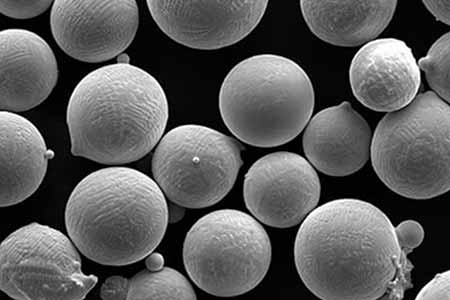
자주 묻는 질문
| 질문 | 답변 |
|---|---|
| DAPS란 무엇인가요? | DAPS는 유연하고 효율적인 제조 방식인 다이버전트 적응형 생산 시스템의 약자입니다. |
| DAPS는 생산 효율성을 어떻게 개선하나요? | 실시간 데이터를 사용하여 리소스 사용을 최적화하고 낭비를 최소화합니다. |
| 어떤 산업에서 DAPS의 혜택을 받을 수 있나요? | 항공우주, 자동차, 의료, 산업 장비 등. |
| DAPS를 구현하는 데 드는 초기 비용은 얼마인가요? | 첨단 기계, 소프트웨어, 교육 등 초기 투자 비용이 많이 들 수 있습니다. |
| DAPS는 어떻게 제품 품질을 향상시키나요? | 생산 과정에서 지속적인 모니터링과 조정을 통해. |
| DAPS는 지속 가능한가요? | 예, 환경에 미치는 영향을 줄이기 위해 친환경적인 관행과 소재를 사용합니다. |
| DAPS에 사용되는 주요 기술은 무엇인가요? | AI, IoT, 빅데이터 분석, 적층 제조, 로봇 공학, 증강 현실. |
| DAPS는 기존 제조업과 어떻게 다른가요? | DAPS는 기존 방식에 비해 높은 유연성, 효율성, 확장성, 지속 가능성을 제공합니다. |
| DAPS를 기존 시스템과 통합할 수 있나요? | 예, 하지만 현재 시스템을 크게 수정하거나 업그레이드해야 할 수도 있습니다. |
| DAPS를 구현할 때 어떤 어려움이 있나요? | 높은 초기 비용, 복잡성, 기존 시스템과의 통합. |
결론
그리고 다이버전트 적응형 프로덕션 시스템(DAPS) 는 제조 기술의 중요한 도약을 의미합니다. 적응성, 효율성, 지속 가능성을 결합한 DAPS는 다양한 산업에 다목적 솔루션을 제공합니다. 초기 비용과 복잡성으로 인해 어려움이 있을 수 있지만, 제품 품질 향상, 비용 절감, 환경 영향 개선이라는 장기적인 이점을 고려하면 DAPS는 가치 있는 투자가 될 것입니다. 기술이 계속 발전함에 따라 DAPS는 제조업의 미래를 형성하는 데 점점 더 중요한 역할을 하게 될 것입니다.




